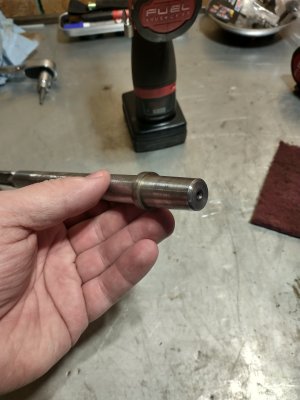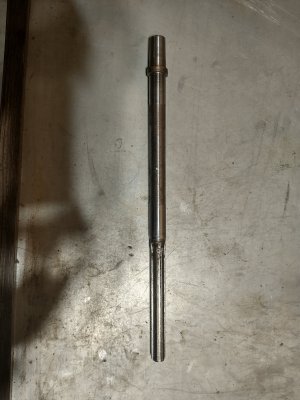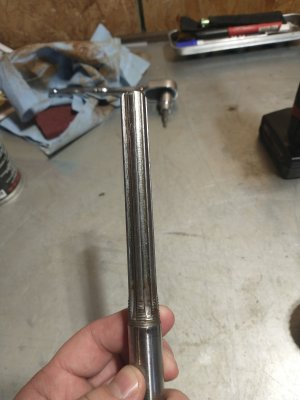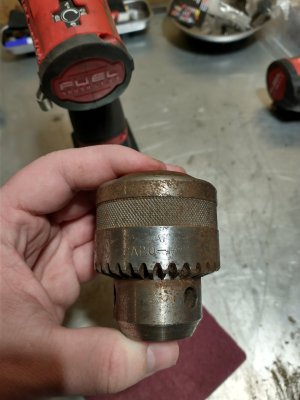First of all don't start machining anything yet. You are going to replace a few things but that comes later.
1. Reassemble it and mount the chuck.
2. Make sure its the press is bolted to something solid.
3. Make sure the quill is full retracted as the bend is likely (99%) just below the bearing and just above the chuck.
4. Take an indicator and determine the direct of the bend.
5. This is the scary part and requires some feel, wack it with a 2-1/2 hammer in the direction you want it to go.
6. Repeat 4, 5 and 6 until you got it where you want it (with a little effort you can get it within 0.0005" or less) within a few minutes no machining required. You are basically doing the reverse of what got it bent in the first place
Back to parts, new chuck (thats a given, even if it works due for replacemrnt), bearing(s) this is a bit of luck thing (check it) if they feel rough in the slightest, definitely! If not your choice, but assume you are going to at some point like it or not.
I have used this method and works extremely well.
Not into violence, the second method is torch (heat straightening), you will need a lath, a torch and a indicator. Spot heat the bend correctly the metal expands and pushes itself straight.
Haven't tried it but it is and old school trick, YouTube it (machinist is Ken Fenner I believe). BTW I would still replace the chuck.








